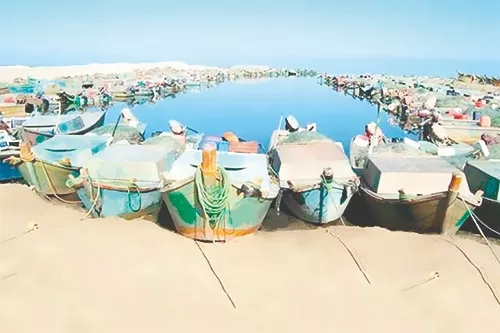By Sarah Saad
Sinai has a special status for Egyptians, thanks to its distinctive geographical location, as a link between the Mediterranean, the Suez Canal, the Gulf of Suez, and the Gulf of Aqaba. It also enjoys strategic importance for their country’s national security. The Egyptian government made concerted efforts to develop the peninsula in the past years.
In 2014, President Abdel Fattah El Sisi announced an integrated national project for the protection and comprehensive development of Sinai.
The Sinai development strategy consisted of a plan for ridding the region of terrorism, establishing new cities, implementing various development industrial, agricultural, and trade projects, in addition to linking the peninsula to the Nile Delta and other governorates in Egypt, developing infrastructure and basic services in Sinai and the cities overlooking the Suez Canal, and attracting investments to the region.
Over the past years, up to eight seaports have been established or developed, in addition to three land ports, seven floating bridges, as well as constructing or developing five airports.
In addition, five tunnels have been constructed under the Suez Canal to connect Sinai to the Canal cities and the rest of the nation.

Work is also under way in a 226km railway line, of which a 99km first phase has been achieved, from al Fardan to Bir al-Abd, besides a 24km part link of Sharq al-Tafrea (East of the Suez Canal).
A report published by the Cabinet’s Information and Decision Support Centre (IDSC), entitled “Egypt and the development of Sinai: unceasing efforts” revealed the completion of the development of North Sinai natural gas fields (third phase), with a targeted production capacity of 45 million cubic feet of gas daily.
Two power plants have been constructed, namely the New al-Shabab (New Ismailia) and Ain Sokhna, in addition to expanding the Sharm El-Sheikh plant.
The state has directed huge investments to establish infrastructure for renewable power projects in Sinai, building the ‘Abu Gharqed’ solar energy plant in Abu Redis, and the ‘Jabal al-Zeit’ wind farm, and one more wind power in Suez.
In the meantime, drinking water coverage in Sinai and the canal cities in 2023 rose to 90.3 per cent, from 84.4 per cent back in 2014. Up to 45 drinking water projects were also implemented.

As for sanitation networks, the coverage rate in Sinai and the canal cities in 2023 reached 77.1 per cent, compared to 17.3 per cent nine years before, thanks to implementing 79 projects, and setting up 30 seawater desalination plants over the last year, from 15 ten years ago.
In addition, investments worth LE73.3 billion were provided for the implementation of national projects in Sinai during 2022/2023, besides providing 332 investment opportunities.
Up to 139 industrial opportunities are available in Sinai and the canal cities. Eight industrial zones and complexes have been added to the area’s investment map, in addition to providing 80,000 jobs in projects carried out in the Suez Canal Economic Zone (SCZone). Thus, the total national projects implemented in region over the period 2014/2015-2021/2022, reached 6,362.

Referring to the social projects in the education sector, up to 3,041 schools were built over 2022/2023 to serve people in the area. Also seven Japanese schools were built, along with four for applied technology.
Furthermore, four community universities were built in Sinai and the canal cities, in addition to six public and private ones in 2022/2023, compared to four of the later category in 2013/2014.
As for the health sector, a number of hospitals, and health centres and units have been established or developed in Sinai and the canal cities.
In the housing sector, 10,000 units were built in the new city of Rafah, besides 16,600 in the new city of Bir al-Abd. Sinai and the canal cities have thus become completely free of unsafe slums.
Within the framework of Digital Egypt project, which aims to provide mechanised government services, Sinai and the canal cities witnessed the automation of 902 commercial registration offices, 21 traffic prosecution offices, 15 traffic units, 17 fixed documentation branches (including 9 operating on a one-stop-shop system) and six automated forensic medicine offices.
As for agricultural projects, the total area, either implemented or targeted for reclamation reached 674,000 feddans. Since 2014, around 224,000 feddans have been reclaimed, while an additional 450,000 are being reclaimed.









Discussion about this post